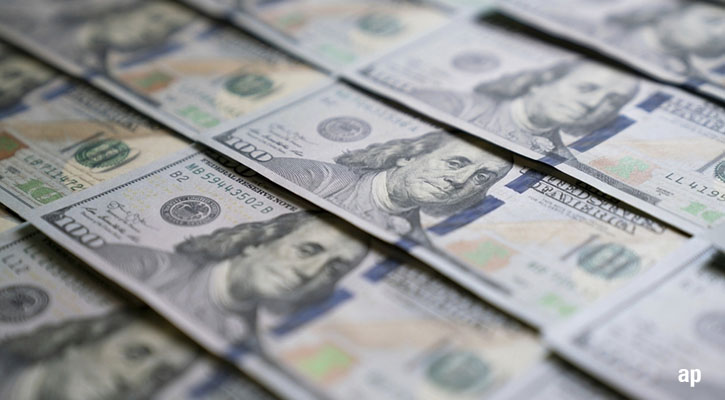
Will growth stocks continue to outperform? That’s the question on several investors’ mind, especially after the numerous headlines detailing the outperformance of the so-called “Magnificent 7 Stocks.” Or could it be that the unloved value stocks are poised for a mean reversion and will outperform next year?
For some investors, the choice is not between value or growth, and in fact, they invest in both without taking sides in this debate. Peter Bates, a core equity portfolio manager at T Rowe Price, is one such investor. “My job is to beat the market, and I’m not going to beat the market by taking a directional bet on growth or value. I’m going to maintain balance and let my stock picking drive my value.”
Instead of thinking about whether a value rotation could finally materialize, his style is to find and own the best company in a segment, and then stick to his discipline of balancing risk and returns. He runs the T Rowe Price Global Select Equity Fund, a concentrated, style-agnostic core portfolio with 35 stock holdings. The fund’s cheapest share class is awarded a Morningstar Medalist Rating of Silver.
Bates, based in Baltimore, told Morningstar on his recent trip to Hong Kong: “If you’re a growth manager and value is winning in 2022, you’re like: ‘Oh, it's just a terrible, terrible market for growth. I can't do anything about it.’ To me, that's an excuse.”
Two Mistakes for Stock Pickers to Avoid
Outside of style, Bates has seen two mistakes in his 20-year career that “aren’t something he wants to be guilty of.”:
- Ignoring cyclical risks, and
- Being overly concentrated
To him, the first lesson is not to ignore cyclical risk. “When you have a bad cyclical event, you cannot throw your hands in the air saying, ‘who could have predicted that would happen?’ I saw that all around me during the Global Financial Crisis. I think, as investors, we have a responsibility to think about risk-return and not just always think positively.”
His job is no different from other stock pickers – to identify the future in a repeatable process. That’s why, in the meantime, he thinks managing risk plays a big role in his fund.
“To be overly concentrated, I think is reckless,” says Bates. “I know some of the concentrated strategies that are out there that I’m competing against. Frankly, I think they’re reckless because they’ll have two or three positions that might be 30% of the fund and then the other 25 positions are the rest. And if they're wrong on one of those two or three positions, it’s going to overwhelm everything that's happening with the rest.”
Instead, he chooses to express preferences by ranging each stock’s weight between 2 and 4%. Thus, in his portfolio, a typical holding reflects a weight of 3%. According to Morningstar, the portfolio has an active share score of 90 at the end of Oct 2023.
‘No Excuses Doesn’t Mean No Mistakes’
Having no excuses for not beating the market doesn’t equate to being free of mistakes. Bates candidly admits some recent lessons.
“I still make mistakes. I’m still trying to learn. I’m certain to make stock mistakes and I’m certain to have periods where I underperformed. But it will be because of stock mistakes, not because I'm making reckless macro bets.”
“With 35 stocks, I need to be right 20 to 25 times. But I also need to make sure if I am following my process, that when I’m wrong, it’s not going to cost me a bunch of money. Because that’s part of risk-return. And I very much think about risk-return. And I want to buy stocks when you're paid to take the risk for owning the stock. If you're not paid to take the risk for owning the stock, don't own the stock.”
He says, for every name of the 35 stocks he owns, “I am almost comparing it to five or more similar type companies to decide which one offers the best risk-return and then that’s the one I'm trying to own.”
Manager’s Bet Against Nvidia Stock Did Not Play Out
Recent perspectives and experiences that have been distilled into his investing philosophy. He highlights the struggle between quality and valuation, and this played out with investor darling stock Nvidia.
Back in January, Bates was deciding his bets around a semiconductor cycle. “There's been a lot of headwinds, and to me, it felt like a good place to take cyclical risk. And at the time, I owned AMD, the B asset – and Nvidia was the A asset. Nvidia was more expensive than AMD in our estimates,” he recalls.
“I felt like I had better downside support in AMD and ultimately better risk-return. Now as the year progressed, we massively underestimated the upside in NVIDIA. I don't think our downside math was wrong on NVIDIA and our upside math was wrong.”
Into the summer, Bates realized that AMD was further behind on GPUs than he thought and that the knowledge gap or the time to catch up with Nvidia was wider than initially anticipated. “Part of the AMD thesis was AMD’s really good in CPUs and taking share and they are working hard to develop a GPU. Obviously, NVIDIA dominates GPUs. The market wants more than one player. We felt that the second player would be AMD. Even if it’s 10 or 15% of the market, it's material for AMD.” But Bates says the investment thesis “kind of failed,”
Even though NVIDIA’s year-to-date return is more than that of AMD, Bates felt it was right to make the switch because there’s less opportunity and more risk in AMD. “My lesson was I am concentrated and often I want to own the best company even if it’s a little more expensive. I made a mistake that cost me 150 basis points because I didn’t do that this year,” he says.
In September, he decided to liquidate the fund position in computer processor maker AMD (AMD) and Netherlands’ ASML Holding (AMS), which makes machines that are an essential component in chip manufacturing. The weightings were used to buy Nvidia (NVDA).
Another Liquidated Position: Yum China
While semiconductor stocks are one example where he owns for a structural trend, there are trades he made for some shorter-term trends. China reopening is one, where he played with Yum China (YUMC), the operator of KFC and Pizza Hut stores on the mainland.
Bates says: “Yum China was definitely a China reopening story. The company really pivoted to make the stores more cost-efficient with things like online or digital kiosk ordering to reduce labor.” As China was reopening, the investment thesis was that sales per store at Yum China would recover to previous levels and the margins would be higher because of the reduced cost.
“The thesis played out and as soon as there was evidence that the sales had recovered to the level they were going to recover to, I didn't want to own it for the next leg of the thesis, which is just opening more and more stores,” he adds.
The fund owned 1.5% of Yum China before the position liquidation. “We only made like 10%. It wasn’t a bad investment; it wasn’t a great investment. But it was time to move on. Because once the organic story had become more mature, I felt like the thesis, I didn't want to play the next leg of the thesis.”
Yum China, down 21.6%, is a 4-star stock rated by Morningstar equity research analysts.










:quality(80)/cloudfront-us-east-1.images.arcpublishing.com/morningstar/QFQHXAHS7NCLFPIIBXZZZWXMXA.jpg)

.png)



.jpg)





